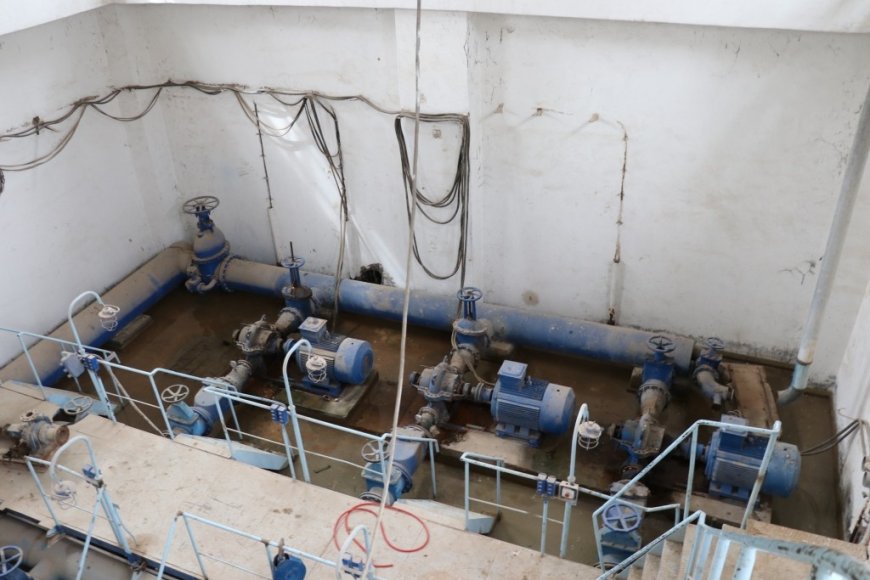With the continued decline in the water level of the Euphrates River and the increased demand for water during the summer season, the Tabqa Water Unit has begun implementing several projects related to drinking water pumping stations.
The Tabqa Water Unit is accelerating the implementation of these projects in anticipation of the summer months, during which water consumption increases significantly amid the severe drop in the river’s water level.
The Energy Authority in the Autonomous Administration of North and East Syria has issued a warning regarding the worsening crisis of the Euphrates River, stating in a recent announcement that the water level of Lake Assad, behind the Euphrates Dam, has dropped by approximately six meters. The Authority has proposed several solutions to mitigate the effects of this crisis.
The projects launched by the Tabqa Water Unit, affiliated with the Municipalities Union, include the installation of new water pumps, maintenance and replacement of others, the extension of main water pipelines, and the implementation of emergency measures to address the sharp decline in Lake Assad’s water level.

Muthanna Al-Dandun, the Head of the Tabqa Water Unit, stated that ongoing projects within the city include the installation of a vertical pump with a capacity of 150 KVA in the southern reservoir to support the neighborhoods of Alexandria, Zuwaiqat, and Al-Mafraq. Another pump with the same capacity is being installed at the A’id Pumping Station, along with the extension of a main pipeline to enhance water distribution to A’id and Al-Mafraq.
In the western sector, the unit is replacing two pumps in the Al-Buassi area with higher-capacity vertical pumps of 250 KVA. A project is also under consideration to extend a 3-kilometer pipeline to support these pumps, along with maintenance work for the pumping stations and infrastructure in the Dibsi area.
Al-Dandun further explained that the declining water level of Lake Assad is one of the major challenges affecting water pumping. Emergency measures are being taken, including extending intake pipes to reach deeper water, and digging trenches to channel water from the river to intake pipes, which can no longer function properly due to the significant water level drop. These interventions are taking place at the A’id, Karin, Al-Buassi, and Dibsi pumping stations.
Similarly, Imad Obeid, the Director of General Dams in North and East Syria, stated in a previous interview with ANHA Agency that Lake Assad has lost about 4 billion cubic meters of its usable water storage. The total storage capacity of the dam is approximately 14 billion cubic meters, with the lake level currently six meters below the maximum level of 304 meters above sea level.

According to mechanical technician Mohammed Al-A’id from the Tabqa Water Unit, the intake pipes of the water pumps are no longer operational due to the significant drop in water levels. This has led to the shutdown of some pumps and a reduced water supply in the city of Tabqa. He added that the current solution lies in digging trenches to bring water closer to the intake points and extending the depth of these intake pipes.
Al-A’id expressed deep concern about the early decline in Euphrates River levels, saying:
“We are still in April, and the drop in the river’s water level has already exceeded the typical annual levels seen during the dry summer months, which heightens our fears of a worsening crisis.”
Workers at the Euphrates Dam and the Tabqa Water Unit are warning of an imminent humanitarian catastrophe if the water level continues its gradual decline. This situation could lead to the shutdown of drinking water pumps, which are the sole source of water for the city of Tabqa. Furthermore, it would negatively impact the agricultural sector, which relies heavily on the Euphrates River, further exacerbating the crisis as summer and drought approach.

